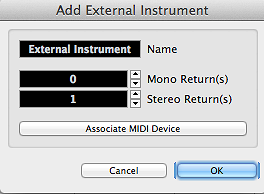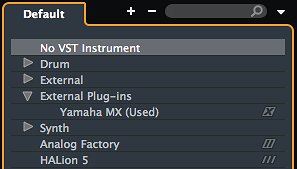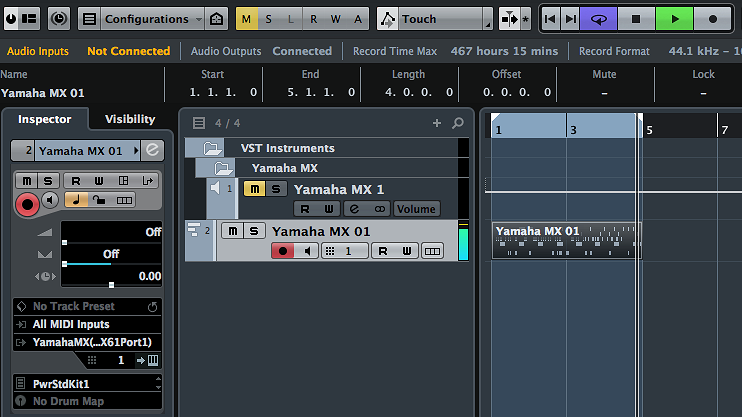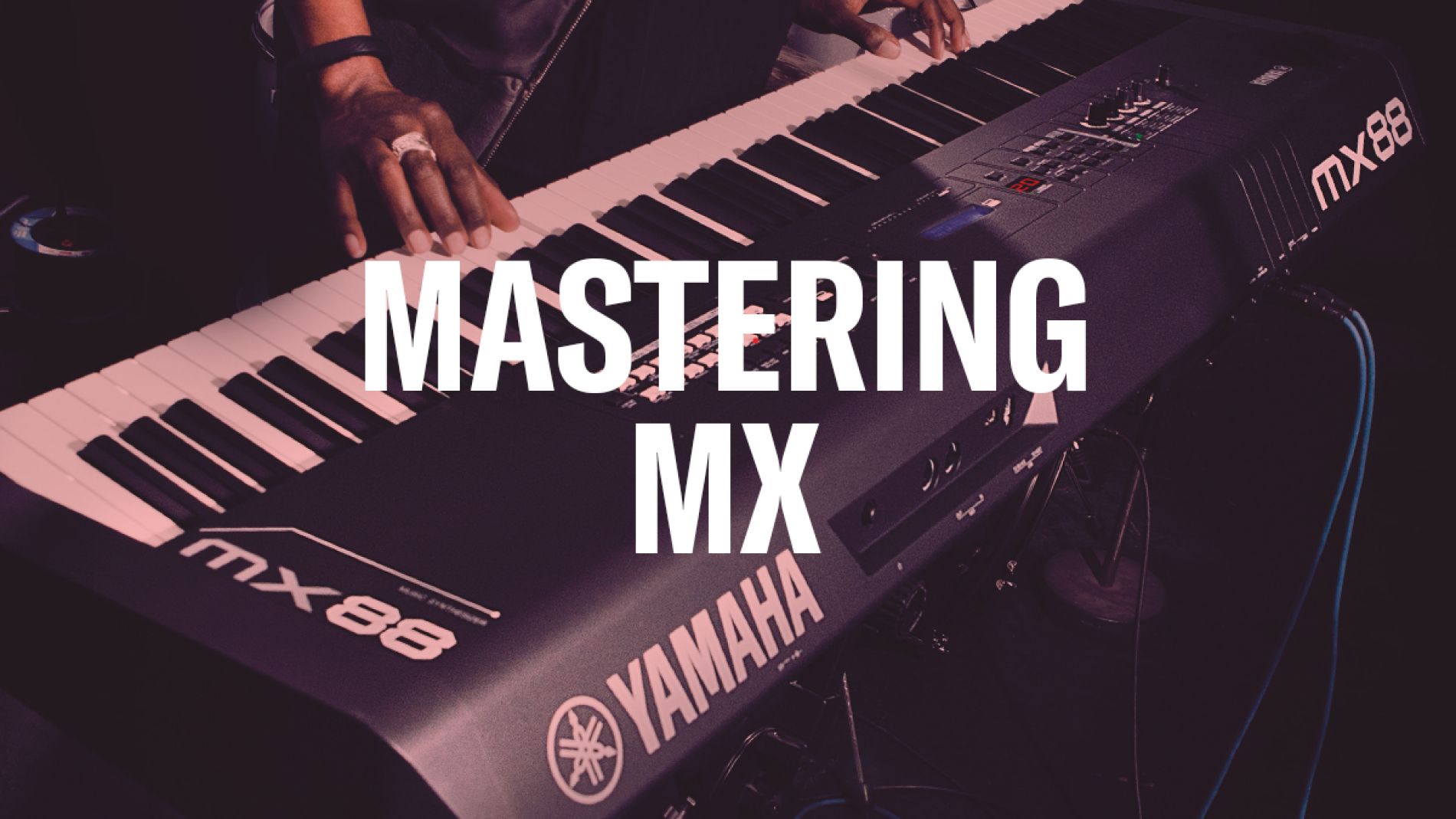You will need to setup your MX as an EXTERNAL INSTRUMENT so that it can “Return” Audio to Cubase Pro 8 in a fashion that allows you to use Steinberg’s Virtual Studio Technology signal routing. This will allow you to route your MIDI Tracks from Cubase to the MX and then have the MX audio return through a VST AUDIO LANE – you can set your Left-Right Markers, Mute Tracks you don’t want to render as audio, and print Audio using the Cubase’s FILE > EXPORT > Audio Mixdown routine.
What you will need:
– MX49/MX61 connected to your computer via USB.
– Yamaha Steinberg USB Driver appropriate for your computer and operating system.
– MIDI DEVICE MANAGER (XML) voice list for the Yamaha MX.
– Cubase Pro version 8.0.10 (or later)*.
* Only the top-of-the-line version of Cubase allows you to setup this EXTERNAL INSTRUMENT routing – this will not work on Cubase AI. This advanced routing scenario is only available on the top-of-the-line Cubase programs.
Setup MIDI Device Manager
– Go to DEVICES > MIDI DEVICE MANAGER > Install Device > select the “Yamaha MX (YAMAHA)” script from the list of installable devices.
– Set the OUTPUT = Yamaha MX49/MX61 (Port1).
– Click OK.

Setup the MX as an External Instrument
– Go to DEVICES > VST CONNECTIONS > EXTERNAL INSTRUMENT.
– Add External Instrument.
– Set it for 1 Stereo Return.
– Click on “Associate MIDI Device”.
– Select the “YAMAHA MX”.
– Click OK.

Your External Instrument tab will look like this once you select the Audio Device and Device Ports: (shown is Macintosh screenshot)*

* Note: If you are using a Windows computer the “Audio Device” will be listed as “Yamaha Steinberg USB” and the Device Ports will be listed as ports 1 and 2, respectively for Left and Right.
– On the main Cubase Pro 8 window click on RACK INSTRUMENTS.
– The Yamaha MX will appear under EXTERNAL PLUG-INS, select it.

“Do you want to create a MIDI track assigned to plugin “Yamaha MX”? will appear.
– CREATE the MIDI Track.
– Each new MIDI Track you create (using the ADD TRACK > MIDI) will need to be assigned to the same “Yamaha MX” plugin.

– Notice a VST INSTRUMENTS FOLDER and a SubFolder for the “Yamaha MX” was created, and a VST AUDIO LANE appears (speaker icon denotes ‘audio’), then the first MIDI track (Yamaha MX 01).
– Notice the first MIDI Track is assigned to MIDI Channel 1 in the Track Inspector… subsequent tracks that you create will each be assigned to the next higher numbered MIDI Channel.
You may want to MUTE (M) the Audio Lane (as shown above) to prevent listening to both the ‘direct’ audio and the ‘returned’ audio – this is your perogative. The Audio Lane’s meter is stereo (thus it will have a left and a right meter) and the MIDI Track which is not audio, is neither Mono nor Stereo – only Audio can be mono or stereo! MIDI Activity is shown as a single bar meter.
The MIDI data is sent to the MX – the Audio Lane is the stereo audio return from the MX hardware.
– When you want to render any of your MIDI tracks as audio go to FILE > Export > Audio Mixdown.
– Set the dialog box that appears carefully (please see your Steinberg documentation for the best way to set this up for your needs).
– It is very important to set the LEFT-RIGHT Markers to define the region that will be rendered.
– You can Mute Midi tracks you don’t want in your audio rendering or you can render them all as a stereo mix.
Because the MX is a real synth (not virtual), it will render the wave in real time. If you are using effects, set the “tail” parameter appropriately so that effects that hang over (like reverb, or echoes) don’t get chopped off.
Try it!
Want to discuss your experiences or ask questions? Join the conversation on the Forum here.





